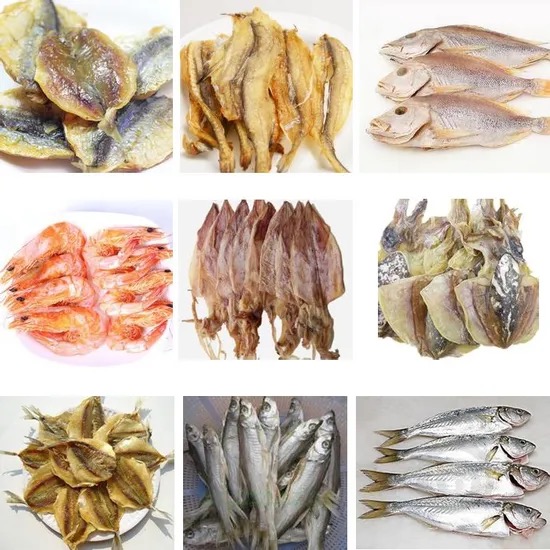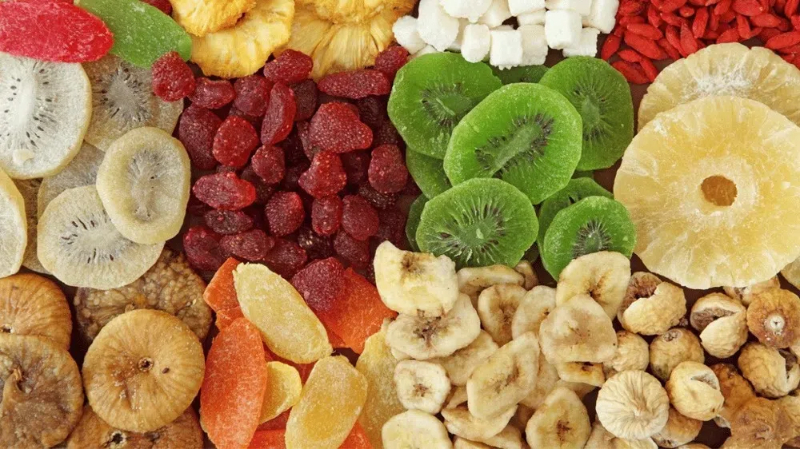
Content Menu
● Benefits of Using a Food Dehydrator
● What Foods Can You Dry?
>> Fruits
>> Vegetables
>> Herbs
● Proteins
● Other Foods
● Tips for Successful Dehydration
● Advanced Techniques for Dehydrating Foods
>> Mixing Ingredients
>> Creating Dehydrated Meals
>> Making Fruit Leathers
>> Storing Dried Foods
● Common Mistakes to Avoid
● Conclusion
● FAQ
>> 1. How long does it take to dehydrate fruits?
>> 2. Can I dehydrate vegetables without blanching?
>> 3. What temperature should I use for dehydrating meat?
>> 4. Can I use my oven instead of a dehydrator?
>> 5. How do I store dehydrated food?
● Citations:
Food dehydrators are versatile appliances that allow you to preserve food by removing moisture, which helps to extend shelf life and enhance flavors. This guide will explore various foods you can dry in a dehydrator, the benefits of dehydration, and tips for successful drying.

Benefits of Using a Food Dehydrator
- Extended Shelf Life: Dehydrating food removes moisture that bacteria need to grow, significantly extending the shelf life of fruits, vegetables, and meats.
- Nutritional Retention: Dehydrated foods often retain more nutrients compared to other preservation methods like canning or freezing.
- Cost-Effective: By preserving seasonal produce or leftovers, you can save money and reduce food waste.
- Healthy Snacks: Homemade dehydrated snacks are free from additives and preservatives often found in store-bought options.
- Flavor Enhancement: The dehydration process concentrates flavors, making fruits sweeter and vegetables more robust.
What Foods Can You Dry?
A wide variety of foods can be dried using a food dehydrator. Here's a comprehensive list:
Fruits
- Apples: Slice thinly and dry at 135°F (57°C) for 6-12 hours. Dried apples make excellent snacks or additions to cereals.
- Bananas: Cut into coins or strips; they take about 8-12 hours at 135°F (57°C). Banana chips are a popular treat.
- Strawberries: Halve or slice and dry for 6-10 hours at 135°F (57°C). Dried strawberries can be used in smoothies or as toppings.
- Mangoes: Peel, slice thinly, and dry for 6-12 hours at 135°F (57°C). They offer a sweet tropical flavor.
- Pineapples: Cut into rings or chunks; drying takes about 8-12 hours at 135°F (57°C). Dried pineapple is great for trail mixes.
Vegetables
- Carrots: Slice thinly or shred; they take about 4-10 hours at 125°F (52°C). Dried carrots can be rehydrated for soups.
- Zucchini: Cut into slices or cubes; drying takes around 6-10 hours at 125°F (52°C). Zucchini chips are a healthy snack option.
- Tomatoes: Halve or slice and dry for about 6-12 hours at 145°F (63°C). Sun-dried tomatoes enhance the flavor of many dishes.
- Bell Peppers: Cut into strips or rings; they take about 6-8 hours at 125°F (52°C). Dried peppers add color and taste to meals.
Herbs
- Basil: Dry whole leaves or stems at 95°F (35°C) for about 1-4 hours. Dried basil retains its aromatic properties well.
- Thyme: Similar to basil, it dries quickly at low temperatures. It's perfect for seasoning various dishes.
Proteins
- Meats: Lean meats like chicken breast or beef can be dehydrated after cooking. Slice thinly and dehydrate for 6-12 hours at 145°F (63°C) for jerky. Proper marination enhances flavor and tenderness.

Other Foods
- Nuts and Seeds: Dehydrate nuts to enhance crunchiness. It's best to soak them beforehand to improve texture.
- Fruit Leather: Blend fruit into a puree and spread it on trays; dry for about 6-8 hours at around 135°F (57°C). This creates a chewy snack that kids love.
Tips for Successful Dehydration
1. Uniform Sizing: Cut foods into uniform sizes to ensure even drying. Using sharp knives or a mandolin can be very helpful in this case.
2. Blanching Vegetables: Some vegetables benefit from blanching before dehydrating to preserve color and nutrients. For example, blanching carrots helps maintain their vibrant orange color.
3. Avoid Overloading Trays: Spread food in a single layer without overcrowding to allow proper air circulation. Overloading can lead to uneven drying and longer processing times.
4. Rotate Trays: For even drying, rotate trays periodically during the process. This is especially important if your dehydrator has fixed fan locations that may cause uneven airflow.
5. Monitor Drying Times: Check foods regularly as drying times can vary based on thickness and moisture content. It's crucial to avoid under-drying, which can lead to spoilage.
Advanced Techniques for Dehydrating Foods
Mixing Ingredients
When preparing meals for dehydration, consider whether to dehydrate ingredients separately or together. For example, you can dehydrate cooked pasta mixed with sauce or keep them separate for later assembly[1]. Ensure that the dehydrating temperatures of the ingredients are similar to prevent uneven drying[2].
Creating Dehydrated Meals
You can prepare complete meals in your dehydrator by combining ingredients like grains, proteins, and vegetables before drying them together[3]. This method is convenient for backpacking trips where lightweight meals are essential.
Making Fruit Leathers
To create fruit leathers, blend ripe fruits into a smooth puree, then spread it evenly on dehydrator trays[4]. You can experiment with different fruit combinations for unique flavors. For thicker textures, consider adding bananas or applesauce to the puree[5].
Storing Dried Foods
Once your food is fully dried, it's essential to store it properly to maintain freshness. Use airtight containers or vacuum-sealed bags to keep moisture out[6]. Label containers with the date of dehydration so you can track freshness easily.
Common Mistakes to Avoid
1. Not Prepping Properly: Failing to wash and cut food correctly can lead to poor results. Always clean your fruits and vegetables thoroughly before processing them.
2. Ignoring Temperature Guidelines: Each type of food has specific temperature requirements for optimal dehydration[10]. Ignoring these guidelines may result in improperly dried foods that spoil quickly.
3. Overlooking Humidity Levels: High humidity can slow down the dehydration process significantly[8]. Ensure your environment is conducive to effective drying by choosing low-humidity days whenever possible.
4. Skipping Conditioning Steps: After drying fruits and vegetables, conditioning them by shaking them in a container helps equalize moisture levels before storage[11].
5. Neglecting Food Safety Practices: Always ensure that meats are cooked thoroughly before dehydration[9]. This step is crucial in preventing foodborne illnesses when consuming jerky or other meat products.
Conclusion
Using a food dehydrator is an excellent way to preserve food while enhancing its flavor and nutritional value. With a variety of fruits, vegetables, meats, and even herbs that can be dried, you can create healthy snacks and ingredients that last longer than their fresh counterparts.
By following the tips outlined above, you can maximize the effectiveness of your dehydrator and enjoy the many benefits that come from dehydrating your own food. Whether you're preparing meals for camping trips or simply looking to reduce waste in your kitchen, mastering the art of dehydration opens up a world of culinary possibilities.

FAQ
1. How long does it take to dehydrate fruits?
Dehydration times vary by fruit type but typically range from 6 to 16 hours depending on thickness and moisture content.
2. Can I dehydrate vegetables without blanching?
While blanching is recommended for some vegetables to preserve color and nutrients, many can be dried without it if prepared properly.
3. What temperature should I use for dehydrating meat?
Meat should be dehydrated at temperatures between 145°F (63°C) to ensure safety against bacteria.
4. Can I use my oven instead of a dehydrator?
Yes, you can use an oven set to low temperatures; however, it may not be as efficient as a dedicated dehydrator due to limited airflow.
5. How do I store dehydrated food?
Store dehydrated foods in airtight containers in a cool, dark place to maximize shelf life.
Citations:
[1] https://www.campkitchen.ca/blog/dehydrating-basics
[2] https://www.groundedandgrowing.com/how-to-preserve-food-quickly-and-easily-with-a-dehydrator/
[3] https://slowerhiking.com/food/adapt-your-favourite-recipes
[4] https://www.backpackingchef.com/dehydrating-food.html
[5] https://eatsleepwild.com/homemade-dehydrated-backpacking-meals/
[6] https://www.healthline.com/nutrition/dehydrated-food
[7] https://www.youtube.com/watch?v=rXNIHzcE8F0
[8] https://learn.eartheasy.com/guides/a-beginners-guide-to-dehydrating-food/
[9] https://www.backpackingchef.com/food-dehydrator-recipes.html
[10] https://www.freshoffthegrid.com/dehydrating-food/
[11] https://homesteadingfamily.com/preservation-101-intro-to-dehydrating-food/
[12] https://www.allrecipes.com/article/how-to-use-a-food-dehydrator/











